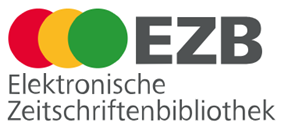In Vitro Development of Ovine Embryos Following Maturation Under Limited CO2
Abstract
An experiment was conducted to examine the influence of CO2 during in vitro oocyte maturation on the in vitro ovine embryo development. Three treatments of CO2 were subjected to the oocyte development. Those were 2h gasses prior to maturation in incubator (T1); without CO2 either prior to or over maturation (T2) and CO2 exposure both prior to and over 22h maturation (T3). A total of 324 oocytes were used. Putative zygotes were cultured for seven days and evaluated for their developmental stage. Presence of CO2 (T3) increased the proportion of oocytes reaching Metaphase II ( 66.50 + 3.5%; p<0.05). Whereas T1 and T2 resulted in lower number of Metaphase II oocytes, i.e., 46.00 + 2.5% and 42.50 + 2.0%, respectively. Gassed oocytes over 22h maturation (T3) cleaved higher (72.22 + 3.36%) than ungassed oocytes in T1 and T2, i.e., 62.12 + 3.38% and 60.00 + 3.00%, respectively (p<0.05). Limitation of CO2 during IVM did not affect the ability of oocytes to develop to blastocysts following in vitro fertilization (IVF) and in vitro culture (IVC) (34.48 + 2.9% vs. 33.00 + 2.5% vs. 36.50 + 3.0%, respectively for T1, T2, and T3; P>0.05). This study suggests that it is possible to mature ovine oocytes in the absence of CO2 without loss its potensial development. It may therefore be an effective method of maturing ovine oocytes during transportation to IVP (in vitro production) laboratory.Downloads
HAYATI J Biosci is an open access journal and the article's license is CC-BY-NC. This license lets others distribute, remix, tweak, and build upon author's work, as long as they credit the original creation. Authors retain copyright and grant the journal/publisher non exclusive publishing rights with the work simultaneously licensed under a https://creativecommons.org/


















.png) IPB University
IPB University Department of Biology
Department of Biology The Indonesian Biological Society
The Indonesian Biological Society 

